A Plague of Jewels
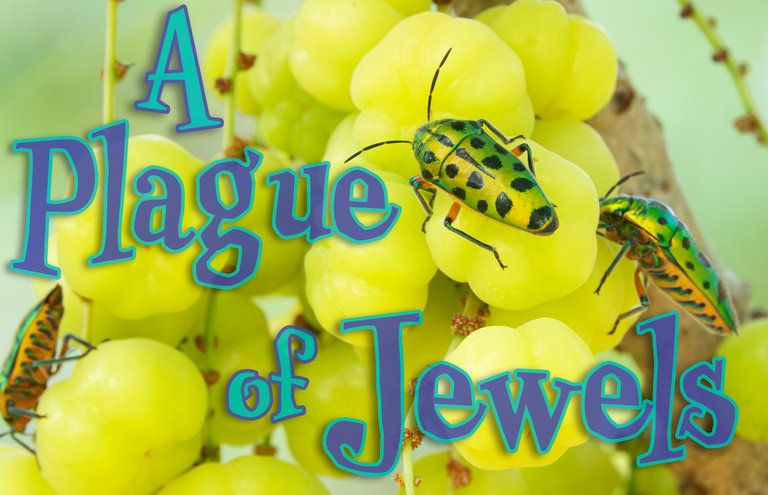

These are jewel bugs (Scutellera perplexa) and we currently have a hundred or more on our fruiting Indian gooseberry tree. The tree is called mayom in Thai and there is a tradition for homes in Thailand to have one in the front garden as it is believed to attract admirers. It is a lovely little tree especially when full of clusters of yellow fruit. The fruit are edible but very sour and the common uses all involve a lot of sugar!
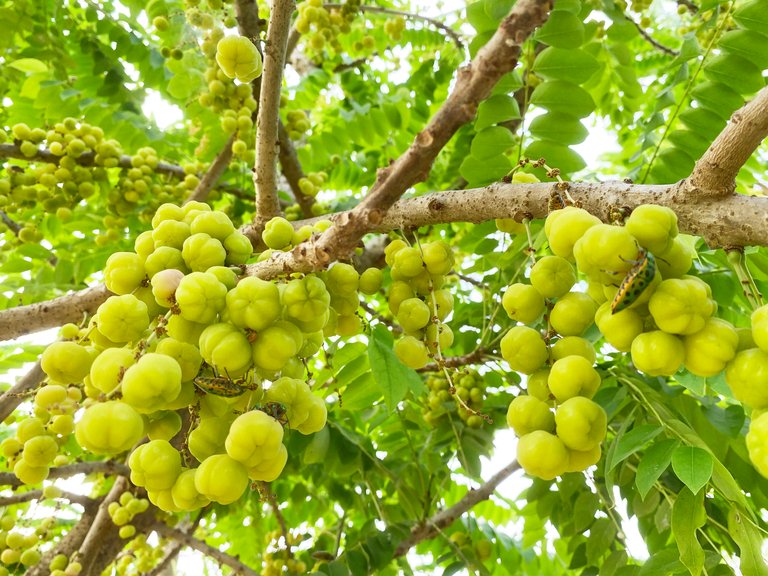
Most of the time they are not harvested so having a plague of insects sucking on them is not a problem, particularly when the insects are as beautiful as these jewel bugs. However, these insects can be a serious pest of some commercial crops in the region, such as the castor oil plant in India.
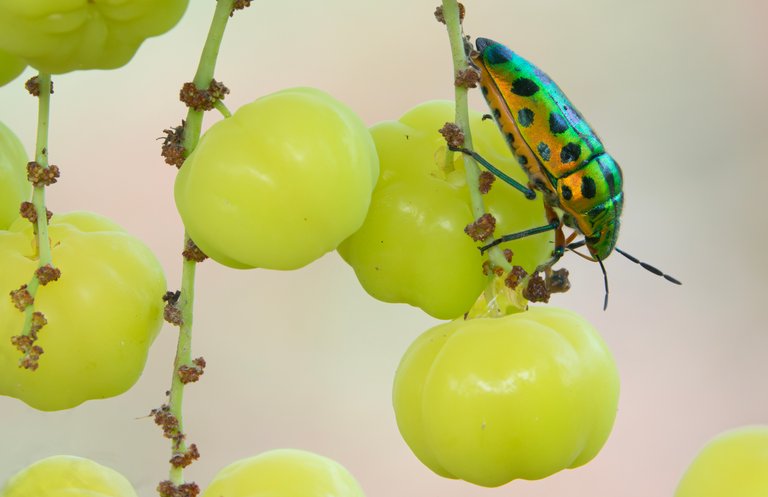

This is the first year I've seen them here, although it is quite possible that I just failed to notice them before! They were not camera-shy unless I got very close when they would scuttle around the other side of the fruit or branch. Only persistent annoyance from me made them fly away.


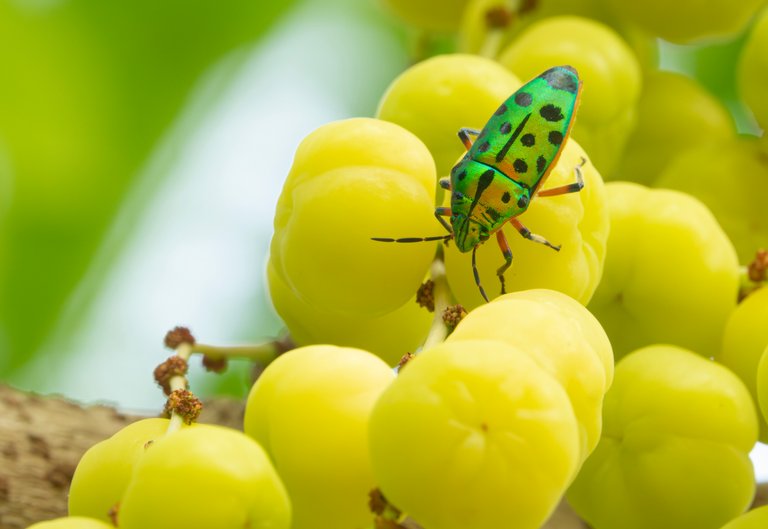
I love the name, jewel bug, a combination of their wonderful colour/pattern together with a bit of our negative attitude towards insects. They basically have a green body with orange hairs, so depending on the angle and light direction they can look green, orange or a two-tone combination.
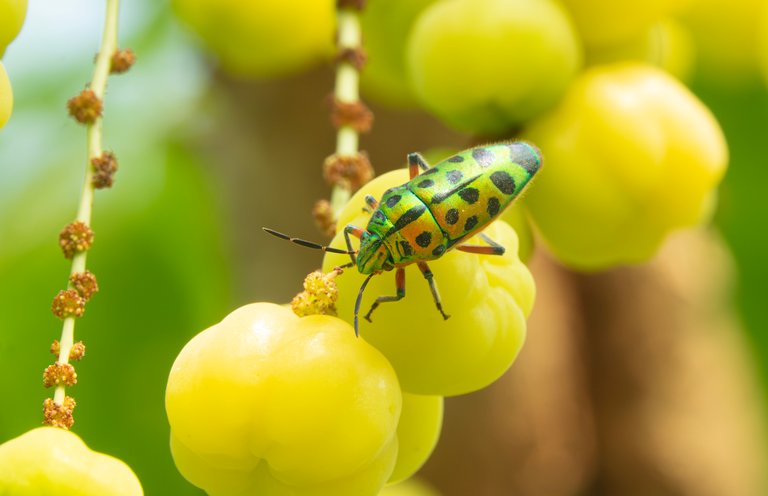


This mating pair had an extra male on top of the female unsuccessfully trying to lever his way in.
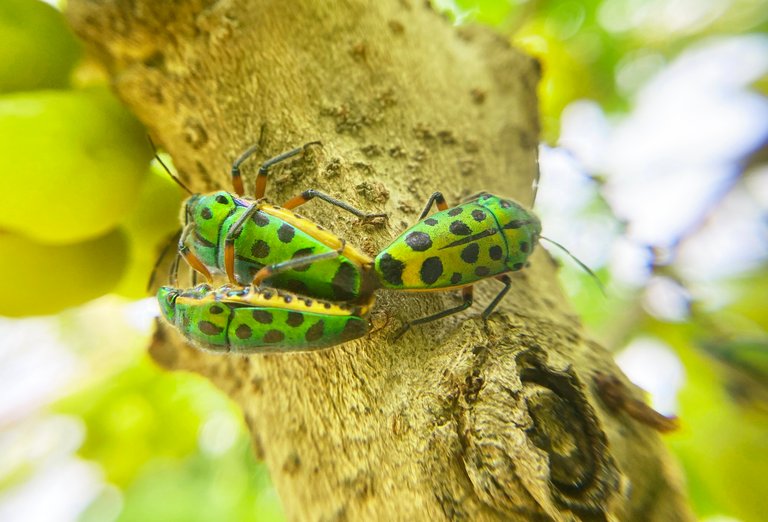
Most of what I saw were adults but there was also this little group of immature stages who always stayed in the shadows.
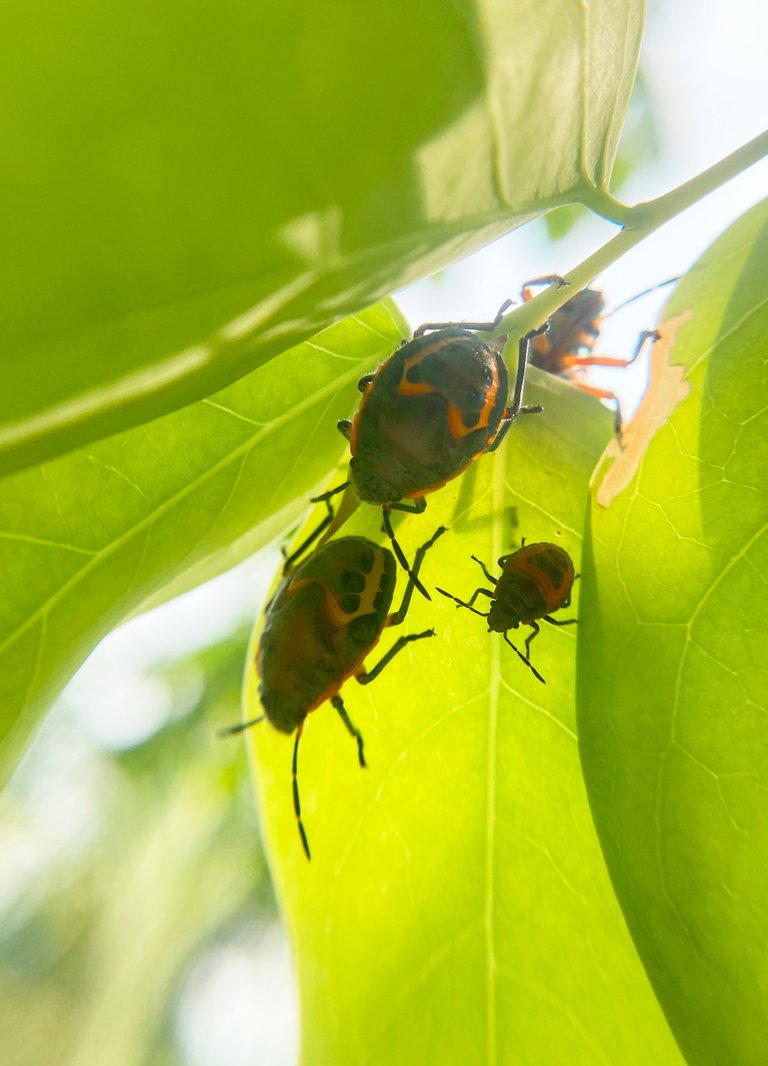
This mayom tree supposedly attracts admirers, which was kind of true in this case as I was attracted to admire the insects that the tree had attracted. Given how much I like them it feels mean to call them a plague but the fruit they feed on quickly rots so the lovely bunches of yellow fruit won't last as long as they usually do. However, they are welcome to come back again next fruiting season.


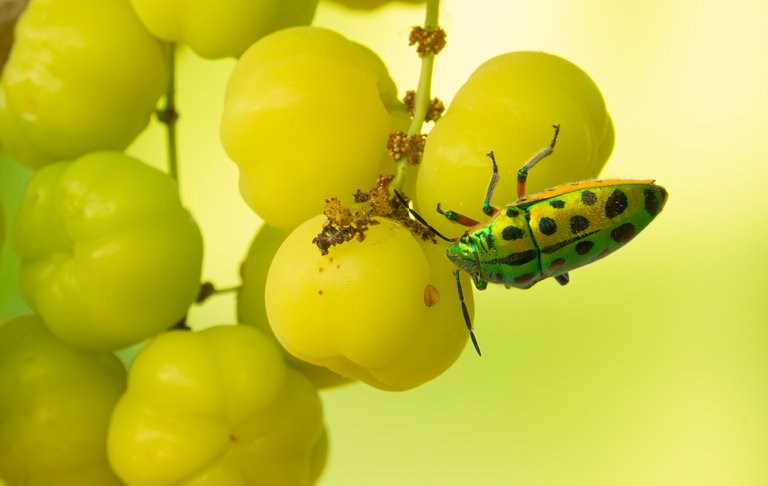


Oooo! I grew up having this tree on our backyard we call this "Iba" we usually eat this with salt for it is indeed very sour....hahaha.
I like sour so I sometimes add little pieces into my morning muesli...but only little bits
You have awesome photos of these beautiful and colorful insects... Locally on my side we call them kanding-kanding in my dialect.
But mostly their colors here are orange, unlike yours with green, blue, orange combinations. So pretty! They look like giants on your photos but in person they are just tiny....☺️☺️🤭
Thanks. It's good to hear about yours.
Their colors are quite pretty for bugs !
I'm guessing they are easier to tolerate when they are eating something that you don't care a lot about.
Yes, if they were on the mangoes that would be different!
⋆ ᴛʜᴇ ᴘʟᴀᴄᴇ ғᴏʀ sᴏᴜᴛʜᴇᴀsᴛ ᴀsɪᴀɴ ᴄᴏɴᴛᴇɴᴛ ᴏɴ ʜɪᴠᴇ
⋆ sᴜʙsᴄʀɪʙᴇ ᴛᴏ ᴛʜᴇ ᴀsᴇᴀɴ ʜɪᴠᴇ ᴄᴏᴍᴍᴜɴɪᴛʏ
⋆ ғᴏʟʟᴏᴡ ᴛʜᴇ ᴀsᴇᴀɴ ʜɪᴠᴇ ᴄᴏᴍᴍᴜɴɪᴛʏ ᴠᴏᴛɪɴɢ ᴛʀᴀɪʟ
⋆ ᴅᴇʟᴇɢᴀᴛɪᴏɴ ʟɪɴᴋs 25 ʜᴘ⇾50 ʜᴘ⇾100 ʜᴘ⇾500 ʜᴘ⇾1,000 ʜᴘ
We also have that fruit here in the Philippines. And like what you said, it's really sour! I can still remember how I tried eating some way back when I was still a child, and I ended up regretting doing so. Geez.
Haha! I can imagine the expression on your face!